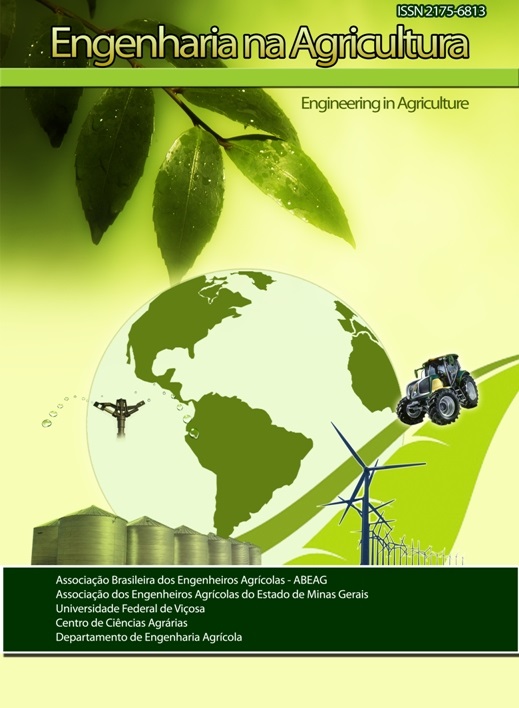CONTROL OF MAIZE WEEVIL WITH APPLICATION OF DIATOMACEOUS EARTH IN CORN GRAINS STORED IN DIVERSE TEMPERATURES
DOI:
https://doi.org/10.13083/reveng.v27i5.948Palavras-chave:
storage, damage, pest insects, inert dust, Sitophilus zeamaisResumo
The insect known as maize weevil (Sitophilus zeamais) is one of the most important pests of stored corn in Brazil. Among the various forms of control, one can highlight the use of inert powders, which has advantages of not providing risk to the environment or to human and animal health, besides not having reports of insect resistance. Thus, this work evaluated the effect of different doses of diatomaceous earth on the development of Sitophilus zeamais on two temperature conditions on corn grain storage. A completely randomized design was adopted in a factorial 4x2x4 (diatomaceous earth dose x storage temperature x storage time) dosage, with three replicates. The diatomaceous earth doses were: 0, 250, 500 and 1000 g t-1 and subsequently stored at temperatures of 22 and 30°C for 90 days. The bulk density decreased during the storage for all diatomaceous earth doses applied, but in inverse proportion to the dose increment. Diatomaceous earth has proven better efficiency in the control of S. zeamais, with increase in dose and storage temperature. Dry weight decrease was observed in all doses and storage temperatures evaluated, but it was more pronounced in those grains that have not received the application of diatomaceous earth.
Downloads
Downloads
Publicado
Como Citar
Edição
Seção
Licença
Autores que publicam nesta revista concordam com os seguintes termos:
O(s) autor(es) autoriza(m) a publicação do texto na da revista;
O(s) autor(es) garantem que a contribuição é original e inédita e que não está em processo de avaliação em outra(s) revista(s);
A revista não se responsabiliza pelas opiniões, ideias e conceitos emitidos nos textos, por serem de inteira responsabilidade de seu(s) autor(es);
É reservado aos editores o direito de proceder a ajustes textuais e de adequação às normas da publicação.
A partir da submissão, o autor estará cedendo integralmente seus direitos patrimoniais da obra à publicação, permanecendo detentor de seus direitos morais (autoria e identificação na obra) e de acordo com a Licença Creative Commons, CC BY-NC.








 Esta obra está licenciada com uma Licença
Esta obra está licenciada com uma Licença 